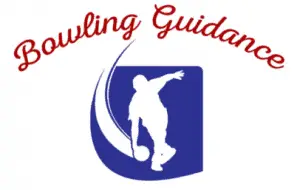
Hand position in bowling is everything! It determines how the energy of the ball swing is transferred through the bowling ball. So any wrong position will lead to flawed ball release and it will jeopardize your shot. No one wants that, do they? Therefore, learning the correct hand position and gesture is highly important to get a perfect ball motion and reaction. If you think your position of the hand is the reason behind your gutter balls and no strike or spare, it’s high time you learned more about hand position in bowling.
What is hand position at the release of bowling ball?
Hand position at the release of bowling ball indicates how a bowler keeps his/her wrist before and after ball swing and gets the fingers out of the thumb and finger holes right before the release. A bowler can follow multiple ways to release a bowling ball. When you’re outside the foul line and about to approach, you insert your fingers in the driller holes. You get to adjust your hand position here with flexibility. But here’s the thing, your hand position matters the most when you’re about to release the ball on the lane.
Developing a proper release with the correct hand gesture is the best possible foundation for great bowling performance. But you need to adjust your hand position based on the situation. Balancing your hand during release actually transfers some of the swing’s energy into the bowling ball, and that creates a torque motion. Whatever your hand position is, rotational and translational forces influence your ball’s movement down the lane. So, if you don’t have a suitable hand position during ball swing and release, you’ll never get a satisfactory ball motion.
Different Types of Hand Positions
Basically, there are two release positions that bowlers of all ranks follow. One of them is for straight shots and the other one is for hook shots. A bowling ball’s movement depends on the way you change your hand position during ball release. So let’s get to know about them more!
Straight Release Hand Position:
The straight release is considered passive, in general. During a straight shot, your forearm and hand do not move at the release point. The goal is to create a heavy end-over-end ball motion as it emphasizes accuracy. This is very important when you are aiming for spares. If you’re in for a passive straight release, your bowling ball needs to be set in an accurate position at the beginning of your stance and it has to remain that way throughout the ball swing.
For this kind of release, your fingers have to be aligned in a 12:00 and 6:00 hand position. This means, your thumb will line up with the gripping fingers. You will have to rotate your forearm a little but enough to line up the fingers and the thumb with the help of the center of your forearm. The balls’ rotational direction will be nearly the same as the direction you will throw it.
Do not cup your hand or wrist during ball release. Keep the wrist position as straight as possible. If you can’t do that, you can keep them a bit extended towards the back. If you’re one of those players whose wrist breaks back and yet you manage to align your hand position, you can do that. As long as the direction of rotation of the ball is straight. This is how precise the hand position for straight release should be.
Hook Release Hand Position:
Hand position during hook release is comparatively more complex than straight release. When you want your bowling ball to hook, your fingers should be under the bowling ball but a bit offset from its center. You need to do this because a ball swing is gonna drive your hand through, then up, and then on the side of the bowling ball. Your hand will have less flexibility than your ball. If you’re rooting for an effective hook, keep in mind that excessive motion is not mandatory.
For a basic hook release, your fingers need to be at a 10:00 and 4:00 hand position right at the point of ball release. Follow this method if you’re an intermediate player. If you’re an advanced bowler, then you might be interested in an active hook release. To do that, keep your thumb pointed toward either 1:00 or 2:00 (depends on your drilling configuration). This means it will put your gripping fingers in a 7:00 or 8:00 position.
So based on which hooking style you will follow, set up your hand position first. When you’re at your stance, rotate your forearm until your palm is faced inward a little. Make sure your palm isn’t turned fully inward. Your palm can’t be in a position where it is facing the ceiling either. So, maintain that hand gesture throughout the swing until the ball is completely out of your hand and released.
Conclusion
That’s all for today folks! If you have set your goal to develop your releases and adapting a better one, all you have to do is practice following the correct hand position. Remember to change your necessary hand and wrist position at the stance. Try to develop multiple ways of ball release to achieve versatility in your bowling style. Imagine the possibilities! You can do any kind of ball release. How great is that?!

